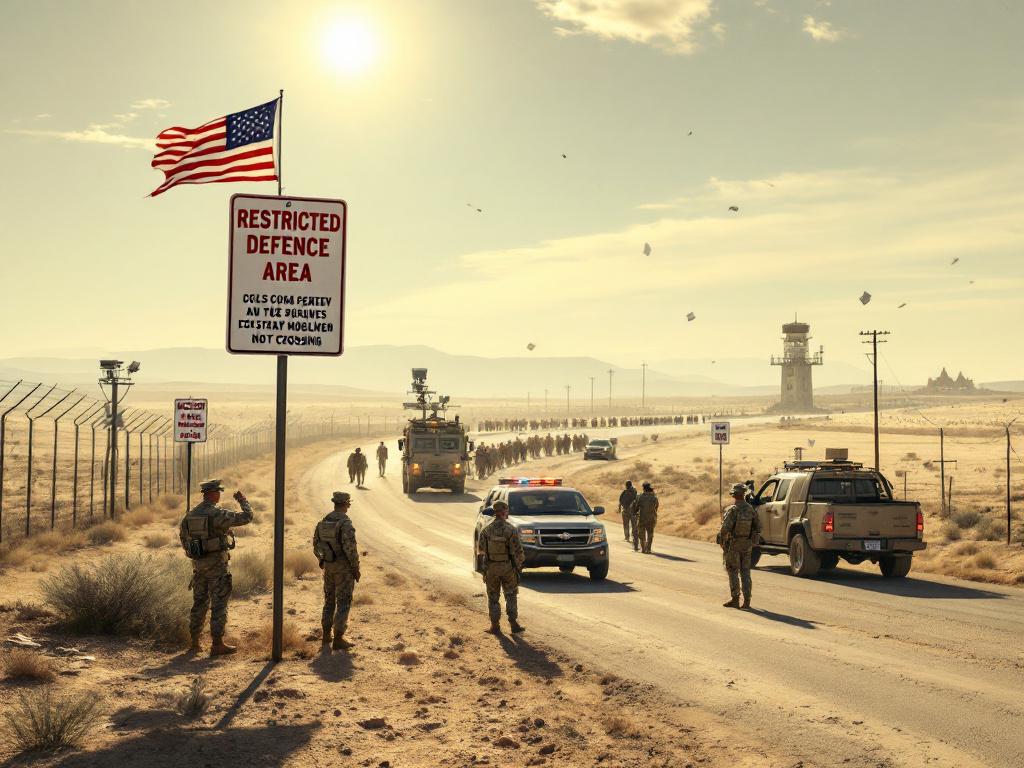Articles in this Cluster
15-05-2025
The Department of Homeland Security asked the Pentagon for over 20,000 National Guard members to support the Trump administration’s immigration crackdown, marking a potential first for using Guard troops in interior enforcement. Pentagon lawyers are reviewing the request, and it’s unclear what roles the troops would play or whether states must approve. DHS says it will use all available resources to prioritize public safety and deport “criminal illegal aliens.” The move follows broader efforts to boost arrests and deportations, including reassigning thousands of federal agents from other agencies and partnering with local law enforcement, which recently aided ICE in large-scale operations.
Entities: Department of Homeland Security, Pentagon, National Guard, Trump administration, Immigration and Customs Enforcement (ICE) • Tone: analytical • Sentiment: neutral • Intent: inform
15-05-2025
A federal magistrate judge in New Mexico dismissed charges against nearly 100 migrants who were arrested for allegedly trespassing in a newly declared National Defense Area along the U.S.-Mexico border, part of a Trump administration effort to prosecute crossings as military-zone violations. Judge Gregory B. Wormuth ruled prosecutors failed to show migrants knew they were entering a restricted area, noting inadequate signage and circumstances like night crossings and language barriers. Hundreds of similar cases may be thrown out, though migrants still face illegal entry charges and possible deportation. The rulings highlight legal confusion and local backlash over the administration’s broad designation of military zones—covering far more land than expected—and the presence of active-duty troops, which supporters say enhances security but critics liken to an occupation. Officials and residents remain uncertain about public access, with recreational use restricted and aid groups needing permission, as federal agencies continue to mark the areas with warning signs.
Entities: Judge Gregory B. Wormuth, U.S.-Mexico border, National Defense Area, Trump administration, migrants • Tone: analytical • Sentiment: neutral • Intent: inform
15-05-2025
The Trump administration has sharply expanded the U.S. military presence at the southern border, growing active-duty deployments from about 2,500 under Biden to roughly 8,600, and adding Stryker combat vehicles, U-2 spy planes, drones, helicopters, and two Navy warships for round-the-clock surveillance. While border crossings have plummeted—about 8,000 arrests in April versus 128,000 a year earlier—costs have reached $525 million, with no clear end date; the mission is expected to last “years, not months.” The Pentagon has designated two long, narrow strips in New Mexico and Texas as extensions of nearby bases, allowing temporary troop detentions of migrants—though a judge dismissed many related cases for lack of notice. The deployments, which support civilian law enforcement without invoking the Insurrection Act, have sparked concerns in Congress about readiness trade-offs, as some units delay major training and overseas rotations. Commanders and troops say the mission deters cartels and provides real-world operations that boost morale and some readiness metrics, though broader impacts on long-term combat preparedness remain uncertain.
Entities: Trump administration, U.S. southern border, Pentagon, Stryker combat vehicles, U-2 spy planes • Tone: analytical • Sentiment: neutral • Intent: inform
15-05-2025
Wisconsin Judge Hannah C. Dugan pleaded not guilty to federal charges alleging she obstructed immigration agents by directing an undocumented defendant, Eduardo Flores-Ruiz, through a nonpublic exit to avoid arrest at a Milwaukee courthouse. Dugan’s lawyers moved to dismiss the case, arguing judicial immunity and constitutional grounds. A July trial is set, with potential extended jury selection. The prosecution, defended by Attorney General Pam Bondi, has drawn sharp criticism from Democrats, legal experts, and over 150 former judges, who call it an intimidation of the judiciary amid the Trump administration’s broader immigration crackdown. Dugan has been temporarily suspended from the bench while the case proceeds.
Entities: Hannah C. Dugan, Eduardo Flores-Ruiz, Milwaukee Courthouse, Pam Bondi, Trump administration • Tone: analytical • Sentiment: negative • Intent: inform
15-05-2025
A federal judge in New Mexico dismissed trespassing charges against dozens of migrants arrested in a newly designated military zone along the US-Mexico border, ruling there was no probable cause they knew they were entering a restricted area due to inadequate warning signs. While the migrants still face illegal entry charges, the decision undermines a Trump administration effort to use national defense areas in New Mexico and Texas to escalate penalties—potentially up to 10 years—for border crossings. The judge ordered prosecutors to show evidence of migrants’ knowledge of the zone, which they failed to do. The Defense Department and the US attorney’s office did not immediately comment.
Entities: US-Mexico border, New Mexico, federal judge, migrants, national defense area • Tone: analytical • Sentiment: neutral • Intent: inform
